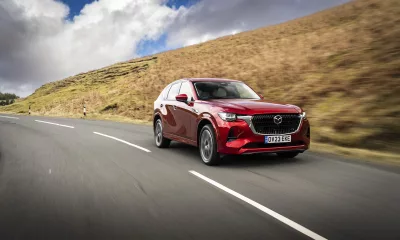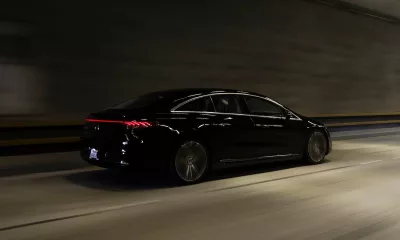

Simplest is best, right? In the case of the Mini One, that maxim might not apply…
Mini recently added the Cooper SE to the range. The first electric Mini is also South Africa’s cheapest EV but, with prices launching at R642 000 and rising to R722 000, it’s not exactly … ahem, cheap. For those buyers who crave a Mini – and why wouldn’t they, considering what a joy these BMW-developed cars are to drive? – the manufacturer offers the option of the entry-level One from around R400 000. Recently equipped with a detuned version of the Cooper’s excellent 1,5-litre, three-cylinder turbopetrol, we wondered whether the One is better value for money than other Minis. The answer is yes … and no.
Let’s look at what the One offers. Where the three-pot installed in the nose of the Cooper boasts 100 kW and 220 N.m, the bottom-rung Mini makes do with 75 kW and 190 N.m of torque stretching from 1 380 to 3 600 r/min. While these figures may appear paltry for about R400k, the One weighs just 1 188 kg for an acceptable power-to-mass ratio of 63 kW per tonne. The crucial bit, however, is the torque figure. At 160 N.m per tonne, it promises punchy performance in-gear not far off the Cooper’s (183 N.m/tonne).
It proved this on our test strip. Where the Cooper Steptronic we tested late in 2019 recorded a 0-100 km/h sprint in a surprisingly feisty 8,55 seconds and the One a more leisurely 10,92 seconds, the latter took just two seconds more to leap from 80-120 km/h. In real-world conditions, it doesn’t feel noticeably tardier and the three-pot is slightly more refined in this application than the Cooper’s. Still, if you desire gutsy performance to match the point-and-shoot chassis, we’d recommend the Cooper.
Elsewhere, it’s business as usual. The cabin feels well built; most surfaces are lined in soft-touch materials and it lacks the annoying squeaks and rattles that plagued the two previous generations of BMW’s Mini. The driver and front-seat passenger have room to spare (head clearance is especially abundant); the driving position is practically perfect thanks to a steering column that adjusts generously for rake and reach and comfortable seats;and the latest version of Mini’s infotainment system – now standard across the range and controlled via a scroller on the transmission tunnel – is easy to use and looks great.
Yet, it’s dogged by the same problems. There’s little legroom in the rear despite a fairly generous 2 495 mm wheelbase, the boot size is paltry and storage options in the cabin are few and far between (or often too small). Still, we won’t mark the three-door Mini down too heavily for these short-comings, as the five-door Hatch, Clubman and Countryman fulfil the requirements of buyers who need more space.
Opting for the smallest Mini pays dividends when the road turns bendy. An eager front-end, lovely steering and little body lean allow the pilot to carry surprisingly high speeds through corners.
We have some qualms with the new seven-speed dual-clutch transmission, however. It’s often slow to respond to throttle inputs, choosing instead to hang on to a higher gear rather than selecting a lower ratio. It’s less obvious in more measured driving but a set of steering-wheel paddles would have been a welcome addition to perk up the reaction time.
TEST SUMMARY
Okay, let’s address the elephant in the room … a deep dive into Mini South Africa’s spec sheets shows the One lacks some of the desirable features that are standard on the Cooper. Where the latter boasts 16-inch alloys wrapped in run-flat rubber, the One makes do with 15s (optional 16s are fitted to this test unit to the tune of R6 100). The Cooper also offers a leather-trimmed sports steering wheel, automatic anti-dazzle rear-view mirror, Isofix anchorage points on the rear seats, a front armrest, PDC aft and cruise control.
Most of these items can be added to the One with the R25 000 Iconic Package but that splits the difference between the two to just R25 500. Combined with a shorter maintenance plan for the entry-level variant (three years/75 000 km versus five years/100 000 km) and you could argue the One represents comparatively poor value for money.
So, in a change of pace for CAR, we’re not recommending an entry-level model but a pricier variant. In the case of the One, it’s argument disintegrates when compared with the Cooper. An odd strategy on the part of Mini SA, certainly, but perhaps that’s the point: draw buyers in with a lower sticker price and, once they’re in the showroom, convince them to sign on the dotted line for the Cooper.
If you really must have the simplest Mini, wait a year or two and nab an excellent second-hand example for a more palatable R250 000 to R300 000.




